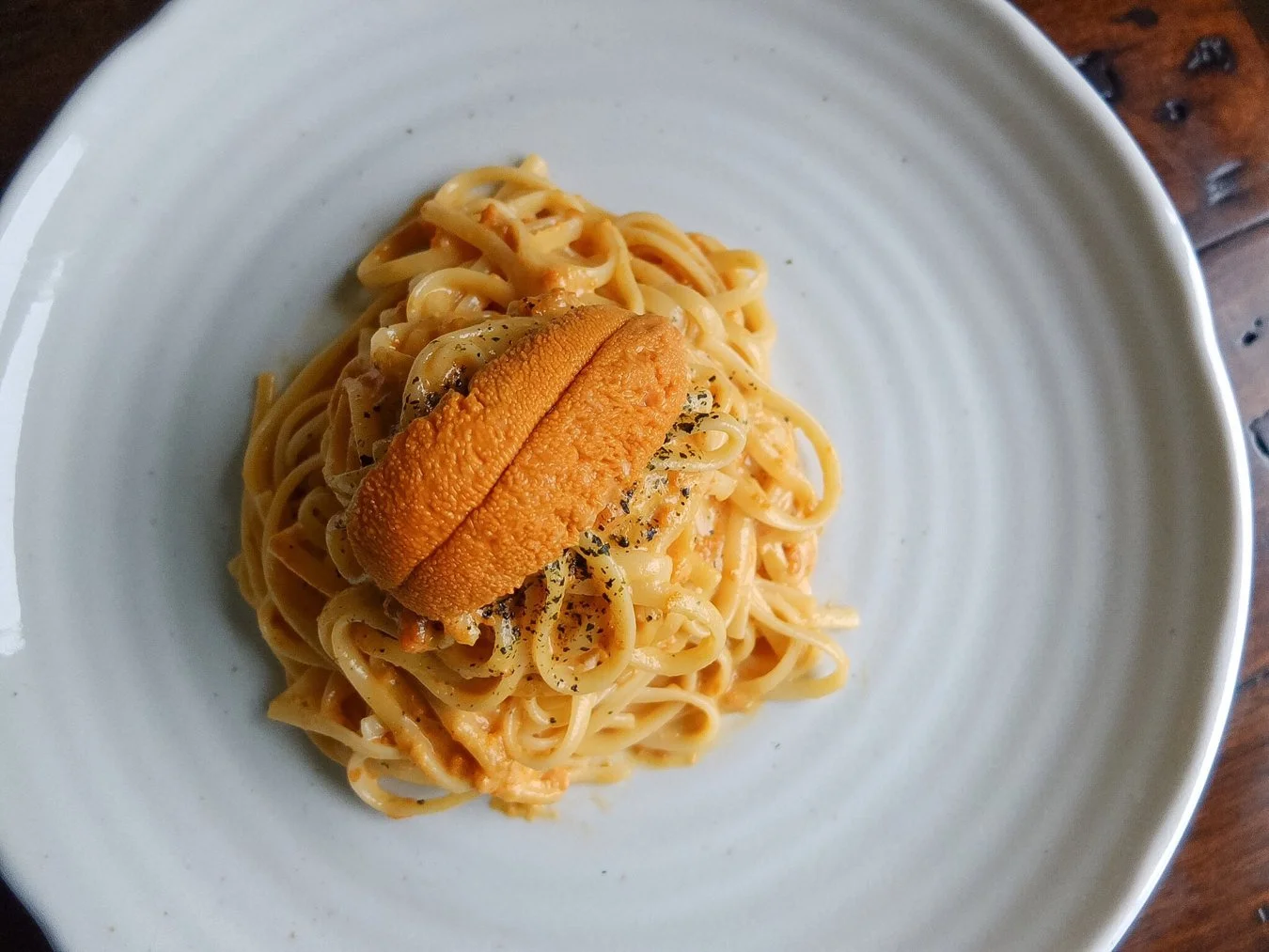Savouring Sea Urchin
Demystifying the shellfish.
The stillness of a misty February morning is broken by a splash as diver Tony Mulhall plunges into the frigid waters off British Columbia’s North Coast. Fighting bone-chilling temperatures, strong currents, and the all-too-real possibility of kelp entanglement, he swims down to the rocks below in search of Strongylocentrotus droebachiensis and Strongylocentrotus franciscanus—green and red sea urchin. Kuroshio captain David McRae keeps watch from the surface as waves buffet his boat and Mulhall hand-harvests the prickly echinoderms from ledges and crevices. It’s a risky endeavour, but a day’s work yields a bounty of treasure.
A sea urchin’s spiny exterior belies the gastronomic delight that lies within. Crack one open and you’ll find five vibrant yellow-orange lobes. Commonly referred to as roe or coral, these are actually the animal’s reproductive organs and not the eggs themselves. Rich in minerals and nutrients, B.C.’s ocean environment is home to some of the world’s finest sea urchin. Called ricci di mare by Italians, kina by New Zealand’s Maori, oursin by the French, wana by Hawaiians, erizo by Chileans, uutuk by Alaska’s Alutiiq, and uni by the Japanese, it’s a highly prized delicacy in many cultures. Yet North American diners have been slow to embrace it.
Jenice Yu, owner of Fresh Ideas Start Here (F.I.S.H.) sustainable seafood markets in Vancouver and Burnaby, explains, “Sea urchin is definitely an acquired taste. Lots of people are hesitant to try it because they’ve had bad uni in the past. And good uni is hard to come by. You need to find a fishmonger who sells sea urchin at its freshest and also knows how to process it well.”
Rich in minerals and nutrients, B.C.’s ocean environment is home to some of the world’s finest sea urchin. Freshness is definitely key. At its best from late September through March, sea urchin is buttery and creamy, but still slightly firm in texture. “Uni is sweet and delicate with a light brininess, like the best of the ocean without smelling or tasting fishy at all,” says Yu. “Red uni is more rich in texture and flavour, slightly more pungent and stronger tasting. Green uni is much smaller in size and a little sweeter.” Processing sea urchin is an exercise in timing. Fishing boats such as the Kuroshio, laden with mesh bags full of sea urchin, speed their daily catch straight to processing plant docks within hours of harvesting the shellfish.
Grand Hale Marine Products, owned by Yu’s family, has been processing sea urchin for over 30 years. Each one is cracked open by hand and the fragile uni gently scooped out for rinsing in a seawater solution. What follows is Grand Hale’s all-natural, proprietary process for curing the uni to preserve its texture and flavour. “Most places use alum during this step to firm up the texture, but alum produces a metallic taste that detracts from sea urchin’s natural sweetness. We don’t use alum at all, and thus are highly regarded by chefs.”


